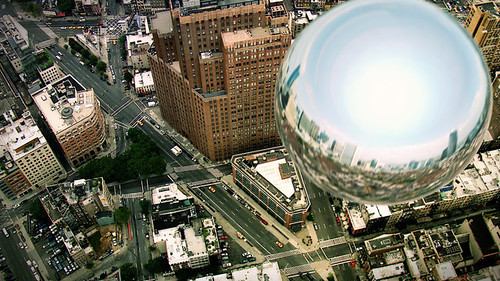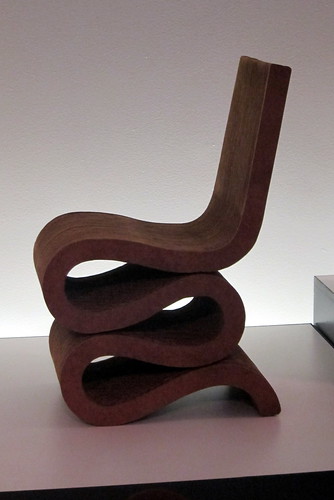Tronic Studio on Vimeo by Etapes
Image by Weiming Lin
Interview : M Webster
Camera & Edit : M Webster
Production : Pyramyd 2009
Tronic Studio is based in New York and was co-founded by Jesse Seppi & Vivian Rosenthal. Dubbed as 'visual futurists', they bring together various disciplines in the field of design, architecture and film, creating thought provoking work that goes well beyond the canons of branding and visual communication.
In this exclusive interview they explain their background in architecture and their interest in using the moving image as a means to explore the 'virtual and actual divide'. They reveal one of their latest works for the prestigious firm, Herzog + DeMeuron–a stunning 3D visualization for the future 57-story residential building to be constructed in the Tribeca area, New York.
//
Fondé par Jesse Seppi & Vivian Rosenthal, le studio Tronic installé à New York, travaille sur des disciplines variées telles l'architecture, le design, le graphisme et le cinéma. Interviewés en exclusivité, ils nous expliquent leur passion pour l'architecture et leur intérêt pour l'image animée dans la réalisation de projets, notamment à travers leur dernier travail pour la prestigieuse firme "Herzog + DeMeuron", une visualisation 3D des prochains logements qui seront construits dans Tribeca Area à New York.
www.tronicstudio.com
Watch this video on Vimeo. Video created by Etapes.
UI Children's Hospital - Street View
Image by givetoiowa
When completed in 2016, the new hospital—located north of the Pomerantz Family Pavilion on Hawkins Drive—will be a dramatic, 14-story oval-shaped building overlooking Kinnick Stadium to the west and the University of Iowa campus to the east.
Denver - Civic Center: Denver Art Museum - Frank Gehry's Wiggle Chair
Image by wallyg
The Wiggle Side Chair, designed by Frank O. Gehry in 1972, was manufactured by Easy Edges Inc. in New York. The chair was constructed of laminated corrugated cardboard and fiberboard, material that became popular in the 1960s as a cheap and light alternative. Gehry discovered the process of gluing layers of corrugated cardboard together to transform massive blocks into furniture. In 1972, he designed a group of low-cost, and light but surprisingly strong and comfortable, seating units called Easy Edges Furniture.
What is Modern?, a temporary exhibition on view at the Denver Art Museum through December 31, 2011, featured imaginative furniture, industrial, and graphic designs that span more than 200 years, from the early 1800s to the present day. The objects—representing a trajectory of innovative thinking and a variety of methods, materials, and concepts—explore the ways in which design has expressed the modern experience.
The Denver Art Museum, a private, non-profit museum, is known for its collection of American Indian art. Its impressive collection of more than 68,000 works includes pieces from around the world including modern and contemporary art, European and American painting and sculpture, and pre-Columbian and Spanish Colonial art. The museum was originally founded in 1893 as the Denver Artists Club. In 1918, it moved into galleries in the Denver City and County Building, and became the Denver Art Museum.
In 1971, the museum opened what is now known as the North Building, designed by Italian architect Gio Ponti and Denver-based James Sudler Associates. The seven-story structure, 210,000-square-foot building allowed the museum to display its collections under one roof for the first time. The Frederic C. Hamilton Building, designed by Studio Daniel Libeskind and Denver firm Davis Partnership Architects, opened on October 7, 2006 to accommodate the Denver Art Museum's growing collections and programs.
No comments:
Post a Comment